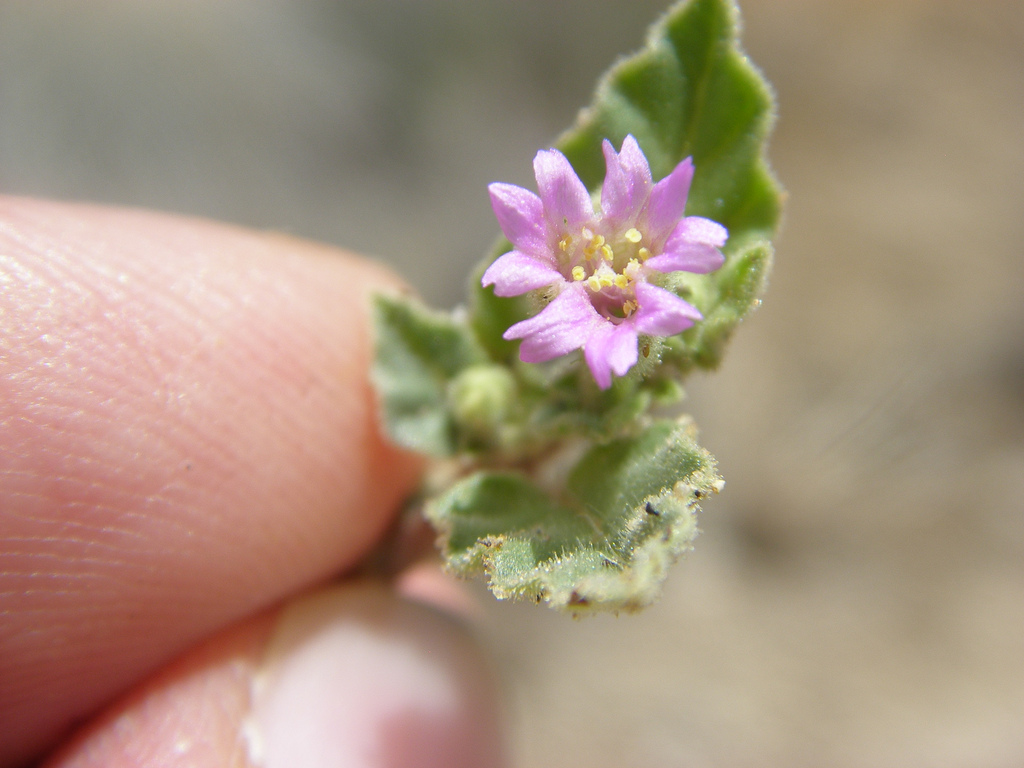
|
Family: Nyctaginaceae |
The two species of Allionia are very similar, differing primarily in the nature and number of teeth on the fruit. In many floras for areas south of the United States only a single species, Allionia incarnata, is recognized. When sympatric, the two species are distinguishable by vegetative and perianth features, but throughout their ranges, the two species cannot be consistently distinguished by the same characteristics. Nevertheless, as noted by B. L. Turner (1994), plants with intergradient fruits are uncommon. Both species may produce fruits with lateral ribs that are curved and winglike, without teeth; this condition is frequent in A. incarnata in North America and occasional in A. choisyi in South America. The three bilaterally symmetric flowers in the Allionia inflorescence bloom synchronously and are sufficiently closely situated that the entire inflorescence resembles a single radially symmetric flower. The fruit is among the most complex in the family. The convex side, oriented toward the center of the cluster of three flowers, exudes copious mucilage when wetted. The viscid glands on the concave surface remain sticky for decades in the herbarium.
|
This project was made possible in part by the Institute of Museum and Library Services [MG-70-19-0057-19].
Powered by Symbiota



